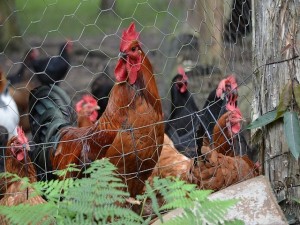 The continuous refining of farming practices may induce farmers to think of adopting the free range concept, which is a good and popular choice. This farming practice is best because it is beneficial for the animals and the farmers alike.
The continuous refining of farming practices may induce farmers to think of adopting the free range concept, which is a good and popular choice. This farming practice is best because it is beneficial for the animals and the farmers alike.
Two-way Freedom
There are a number of pros and cons in this type of farming practice on the side of both animals and the farmers:
On the side of animals, many observe that cattle gain weight faster when feeding on grass, thus making their meat more tender. In natural poultry farming, eggs from open range chickens are deemed more valuable and priced higher because they are richer in nutrients. Chicken are also treated more humanely because there is more variety in their diet and they get to breathe fresh air instead of being locked up in a coop all day.
For the farmers, the freedom of maintaining coops and cages is a huge turn around as meadows, barns and yards do not require regular cleaning. The manure is convertible to fertiliser that presents a significant decrease in expenses if one is tending a garden.
Challenges in Free Range Farming
While free range is a great way to raise profits in farming, there are some potential downside to it as well. For one, the animals may stray too far from the allotted grazing area, or they may get lost or stolen. The best way to address this is by installing farm gates, fences and other managing barricades.
The exposure from changing weather is also a crucial factor that can hinder the success of free-range farming. During frigid climate or extremely hot temperature, the mortality rate of animals rises. This can be fixed by insulated barns.
Free-range farming is a revolutionary but also back-to-basics kind of practice. At best, it gives producers the chance to contribute to the growing free-range market, as well addresses the ecological concerns in animal farming.

